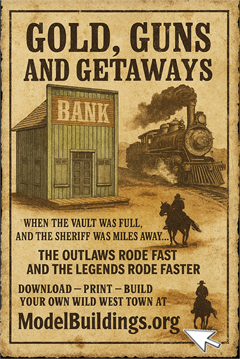Everything on model trains, model railroads, model railways, locomotives, model train layouts, scenery, wiring, DCC and more. Enjoy the world's best hobby... model railroading!
Returning To Hobby – Need Advice
Jim writes:
“I sold and gave away all my old train gear 10 years ago when we downsized. That said, at 83 I still miss the hobby and now with only one car in the garage, I have room so would like to build a new smaller DC layout in OO gauge. I am not looking for a big or complex project, just something I cope with and get up and running in a few months. I have never used flex track and although it doesn’t look as real, I presume it is easier to fix into place? As I said I am not planning a masterpiece or wanting anything too complex, just something to keep me active and entertained. Any ideas would be appreciated. Thank you in advance.”
Please contribute your thoughts below if you have any suggestions to help Jim.
5 Responses to Returning To Hobby – Need Advice
Leave a Reply















Hi Jim,
If your funds can run to it.
I would get a Peco ST-100 starter set and add on from there. I also like the Peco plan book and the Peco catalogue also has hints.
No, I don’t work for Peco, I live in NZ and am also retired.
Have fun and I hope this helps.
Merry Christmas
When you say you assume flex track is easier to fix into place? Easier than what? Compared to ten years ago, I wouldn’t know. Compared to set-track? – I’m using flex track now, and no, it’s not easier to fix into place compared to set-track. I’m on my first layout in over twenty years, and I find it quite hard to get straights that are completely straight, I can’t get smooth joins in the flextrack on curves, so I have had to plan my layout accordingly, and once or twice I’ve had to redo the approaches to points/turnouts as there was a slight kink between the track and point. But since I am modelling narrow gauge I’m quite happy with straights that aren’t quite! But I kept going with flextrack because of the flexible geometry.
As to realism, I think it looks just as good as set-track.
But in conclusion, I would go with whatever you are comfortable with. it’s your layout!
Flext track can be set straight when laid next to a steel ruler or yardstick. There are plastic radius guides that lay in the sleepers and are dragged around at a precise curvature. Spacing between multiple rails can be maintained with a wooden shim from one railset to the other as you lay the second one down next to the first. Run coaches a bit around these curves to ensure the swingout of the coaches clear each other.
Flex track is best laid on curves by staggering the rails about 5-6 inches in the sleepers and then join them together.
Simply slide the rails within the chairs of the sleepers and then join the next rail joiner so that rail joiners are NOT across from each other.
Flex track should approach a turnout at a STRAIGHT angle , not come at it on a curve.
This method will help you avoid “dog legs” in the curves, and avoid putting stress on the joiners themselves.
Hi gents, with flex track, I got onto Brunel Hobbies, who do track aligners in different gauges.
http://www.brunelhobbies.com.au/TrackAlign/trackAlign.htm
I used the straight aligner when doing my N-scale layout, but I used the PECO SetTrack curves for those parts of the layout requiring them.
The tip for joining flex-track on curves? – DON’T! :o)
Use the flex-track for the full curvy bit and invest in a set of really good track cutters, or a Dremel.
When using track cutters, the flat side of the blades go against the good side of the track, while the curvfed sides of the blades goes toward the scrap cutoff side.
Also, do not cut nicle silver track INSTALLED with a dremel because the body of the tool will not allow the disc cutter to be veritcal to the rails.
If you wish to cut rails with a dremel, place the track to be cut up on a jig that allows the body to rest firmly while the disc cutter is at right angles to the rails.